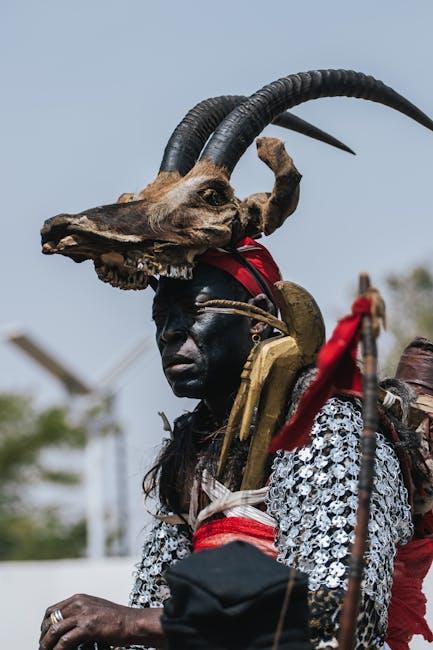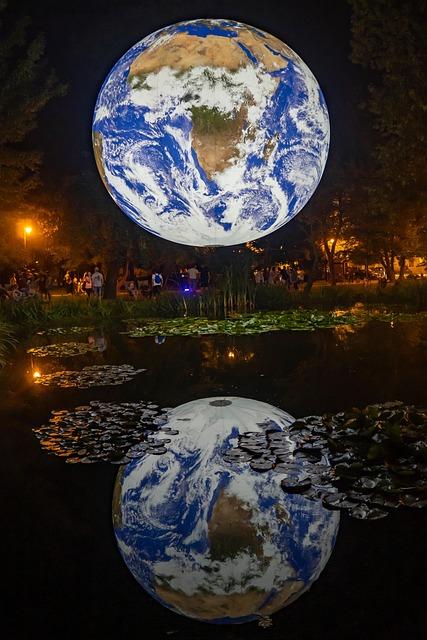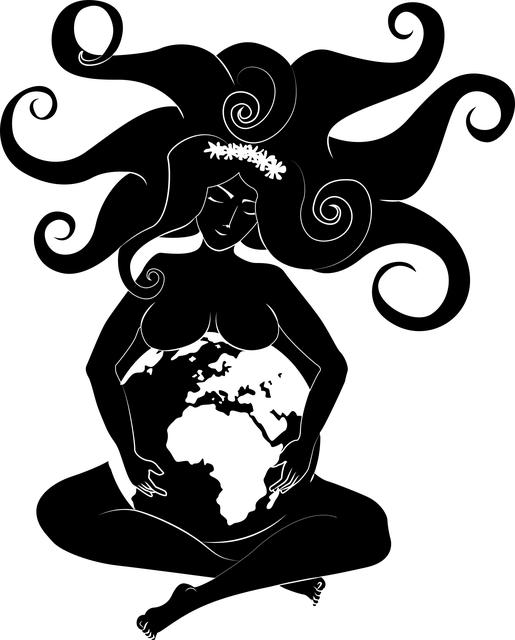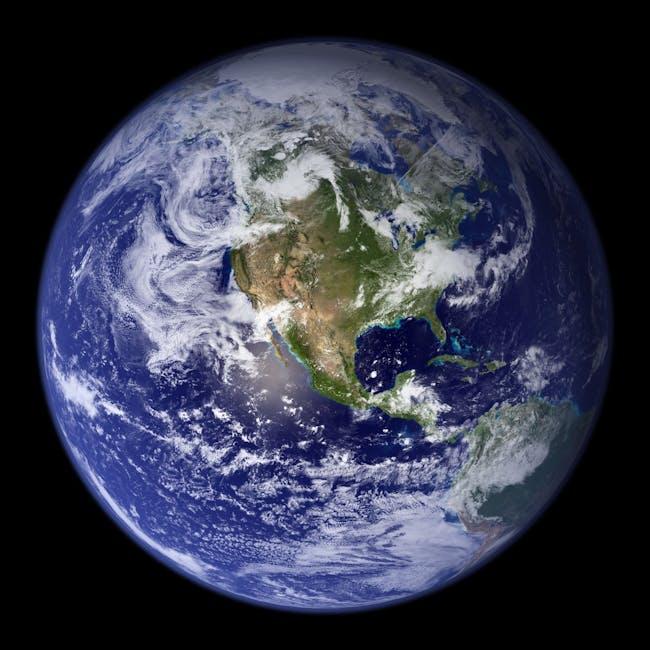Table of Contents
- Understanding the Origin and Evolution of Gaia in English Language
- Exploring the Symbolism and Cultural Significance of Gaia
- Practical Applications of Gaia: From Ecology to Spirituality
- Gaia in Modern Context: How the Term Is Used Today
- Recommendations for Delving Deeper into Gaias Meaning and Implications
- Q&A
- The Way Forward
Understanding the Origin and Evolution of Gaia in English Language
The term ”Gaia” has an intriguing lineage that traces back to ancient mythology and philosophy. In Greek mythology, Gaia is revered as the personification of the Earth, symbolizing not just a planet but the nurturing and life-giving aspects of nature. As the mother of all life, her essence encapsulates fertility, growth, and the interconnectedness of all living things. This notion extends into modern discussions, where “Gaia” often refers to the concept of the Earth as a singular, living organism—a radical shift in perspectives about ecology and our relationship with the environment.
Over time, the interpretation of Gaia has evolved significantly, from a mythological figure to a cornerstone in environmental science and philosophy. The Gaia Hypothesis, proposed by James Lovelock in the 1970s, advanced the understanding of Earth’s systems as self-regulating. It prompted scientists and thinkers to view ecological networks as interlinked entities, where the health of one aspect directly influences others. This hypothesis has transcended its scientific roots to influence numerous fields, including sustainability, climatology, and even ethics, promoting a sense of responsibility towards safeguarding our planet.
In today’s diverse contexts, the meaning of ”Gaia” also finds resonance in various disciplines that examine human interactions with the Earth. Artists, writers, and activists employ the name to evoke deeper awareness about ecological crises and advocate for environmental stewardship. The word often appears in discussions around ecopsychology, highlighting the psychological connections between nature and human wellbeing. As modern society grapples with climate change and environmental degradation, Gaia remains a potent symbol representing the urgent need for a more harmonious coexistence with nature.

Exploring the Symbolism and Cultural Significance of Gaia
The concept of Gaia embodies a deep-rooted connection between nature and humanity, often portrayed as a nurturing mother figure representing the Earth. In many ancient cultures, Gaia symbolizes fertility, creation, and the interconnectedness of life. This symbolic representation is derived from Greek mythology, where Gaia is regarded as the personification of the Earth itself. Her essence permeates numerous disciplines, from ecology to literature, reinforcing the notion that all living beings are part of a greater whole.
Art and literature have long drawn inspiration from the imagery associated with Gaia. Her presence is frequently depicted in artworks that celebrate the beauty and diversity of nature, conveying themes of sustainability and harmony within the environment. The significance of Gaia extends beyond aesthetics, encouraging a cultural shift towards environmental mindfulness. Many artists and poets utilize her symbolism to critique industrialization and promote an eco-conscious lifestyle, emphasizing the responsibility of humanity to protect the planet.
In contemporary discourse, Gaia’s symbolism has evolved to encompass a range of ecological ideologies. Notable movements, such as Gaia Theory, propose that Earth functions as a self-regulating system. This perspective advocates for a deeper understanding of the relationship between the biosphere and geophysical environment, positing that human actions can disrupt this balance. Here are a few cultural interpretations of Gaia’s significance:
- Mythological Roots: Connection to ancient Greek beliefs.
- Feminine Energy: Embodiment of nurturing and creation.
- Ecological Awareness: Advocating for harmony with nature.
Moreover, Gaia serves as a focal point for discussions about climate change and environmental activism. Activists use her name to symbolize the urgent need for collective action in addressing ecological crises. By aligning their movements with Gaia’s symbolism, they invoke a powerful narrative that encourages unity in the face of environmental destruction. As we explore these themes, it becomes evident that the cultural significance of Gaia resonates profoundly in various aspects of modern society.

Practical Applications of Gaia: From Ecology to Spirituality
The concept of Gaia transcends mere academic understanding, weaving its influence through various fields, from ecology to spiritual practices. In ecology, Gaia symbolizes the interconnectedness of all life forms within our planet. This holistic approach sees Earth as a living entity, where systems such as ecosystems and climatic patterns work in harmony. Environmentalists leverage Gaia theory to promote sustainable practices, urging communities to consider the ecological impact of their actions, thereby fostering a sense of responsibility towards preserving the health of our planet.
In the realm of spirituality, Gaia serves as a powerful symbol of nurturing and interconnectedness. Many modern spiritual practices integrate the essence of Gaia to emphasize respect for nature and promote mindfulness. This perspective encourages individuals to cultivate a deeper relationship with the Earth, recognizing its vitality and importance in our lives. By viewing the planet through this lens, practices such as eco-spirituality and earth-based rituals encourage personal and collective growth, advocating for a life that honors both inner and outer ecosystems.
The fusion of scientific and spiritual dimensions of Gaia provides a rich tapestry through which individuals can explore their roles in the broader ecological narrative. Furthermore, educational programs are increasingly centering Gaia’s principles, emphasizing interdisciplinary approaches that incorporate science, philosophy, and art. This can foster innovation in which young minds learn to approach problem-solving with a mix of creativity and ecological awareness. Such initiatives can ultimately pave the way for a more harmonious relationship with our environment, where understanding Gaia’s significance leads to actions that benefit both humanity and the biosphere.

Gaia in Modern Context: How the Term Is Used Today
The term Gaia has evolved significantly from its origins in mythology and science to a concept that permeates various aspects of modern life. In today’s context, it often relates to environmental discussions, illustrating a holistic view of the Earth as a living organism. This perspective emphasizes the interconnectedness of biological and physical ecosystems. Advocates of this idea frequently engage in discussions centered around sustainability, climate change, and biodiversity conservation, drawing on Gaia’s significance as a symbol of balance and harmony within the natural world.
In contemporary spiritual and philosophical circles, Gaia represents a paradigm shift that encourages individuals to view the planet not merely as a resource to be exploited but as a nurturing entity that sustains all life. Modern practitioners of Gaia philosophy often adopt practices that promote environmental stewardship. They might engage in activities such as:
- Community gardening to enhance local food security
- Support for renewable energy initiatives
- Wildlife conservation efforts to protect endangered species
Moreover, the term has infiltrated popular culture, where it is frequently associated with music, literature, and art that reflect themes of nature and humanity’s place within it. For example, many musicians and artists incorporate Gaia-inspired imagery to convey environmental messages, fostering a sense of unity and collective responsibility. This cultural representation not only helps to spread awareness about ecological issues but also invites a broader audience to reflect on their relationship with the Earth.

Recommendations for Delving Deeper into Gaias Meaning and Implications
To deepen your understanding of Gaia’s significance beyond its literal meaning, consider exploring various interpretations across cultures and disciplines. Delve into the mythological aspects that depict Gaia as a primordial goddess, symbolizing earth and nurturing life. This interpretation not only enriches your perspective but also connects with themes of sustainability and environmental stewardship. Additionally, explore the concept of Gaia theory, introduced by James Lovelock, where the Earth is viewed as a self-regulating system. This framework encourages a holistic view of life and its interconnectedness, prompting discussions around climate change and ecological balance.
Engaging with literature and philosophy that frequently reference Gaia can further enhance your comprehension. Works from figures like Carl Sagan and Margaret Atwood weave Gaia into narratives that reflect on humanity’s relationship with nature. Beyond fiction and science, examining art and its representations of Gaia can illuminate how visual culture interprets themes of creation and decay. You may want to compile a reading list that includes not only academic texts but also novels and essays that address Gaia from multiple perspectives, thus broadening your intellectual grasp of the subject.
Participating in community forums or attending workshops focused on environmental activism can provide practical insights related to Gaia’s ethos. Here are some recommended activities to enhance your exploration:
- Nature Walks: Engage with local ecosystems to appreciate the intricate balance of life.
- Volunteering: Get involved in local conservation efforts that embody Gaia’s spirit of nurture.
- Online Courses: Take courses on ecology and sustainability that connect back to Gaia’s philosophy.
Consider joining a discussion group that focuses on the implications of Gaia in contemporary society. Analyzing changes in climate policy, urban development, and agriculture through the lens of Gaia’s interconnectedness can help formulate a nuanced viewpoint on today’s pressing issues.
Q&A
Q&A: Understanding the Meaning of “Gaia” in English
Q1: What does the term “Gaia” mean in English? A: In English, ”Gaia” is derived from the Greek word for “Earth.” The term is often used to refer to the personification of the Earth in ancient Greek mythology, representing the primal mother goddess who nourishes and sustains all life. In contemporary contexts, “Gaia” also embodies concepts of environmentalism and sustainability, symbolizing the interconnectedness of all living things.Q2: How is “Gaia” relevant in modern environmental discussions? A: The term “Gaia” gained prominence in the late 20th century with the Gaia Hypothesis, proposed by scientist James Lovelock. This hypothesis suggests that Earth’s biological and physical components are interconnected, functioning as a self-regulating system. Thus, ”Gaia” has become a symbol within ecological movements, prompting discussions on the need for sustainable practices and respect for the planet.
Q3: Are there any cultural references to Gaia in literature or art? A: Yes, “Gaia” appears in various literary and artistic works. In literature, she is often depicted as a nurturing figure, representing the beauty and complexity of nature. Artists have also embraced Gaia as a theme, showcasing her through sculptures, paintings, and installations that highlight humanity’s relationship with the Earth. These representations often evoke a sense of harmony and encourage reflections on environmental stewardship.
Q4: Is Gaia used in a scientific context? A: Indeed, aside from its mythological roots, “Gaia” has been adopted in scientific circles, particularly in discussions surrounding ecology and biology. The Gaia Hypothesis, for instance, proposes that life on Earth and the environment co-evolve in a dynamic, complex manner. This concept stimulates important debates about climate change, biodiversity, and our responsibility towards the planet.
Q5: How can understanding Gaia’s meaning impact our daily lives? A: Understanding the meaning of ”Gaia” can foster a deeper appreciation for our planet and its ecosystems. This awareness may encourage individuals to adopt more eco-friendly practices, promote sustainability, and cultivate a sense of responsibility towards nature. By embracing the Gaia perspective, we can enhance our collective efforts to protect the Earth for future generations.
Q6: Can “Gaia” have different meanings in other contexts? A: Yes, “Gaia” can represent various concepts and interpretations depending on the context. In some spiritual and new-age beliefs, Gaia is often viewed as a living entity or consciousness, embodying the Earth itself. This interpretation emphasizes a holistic view of existence, where all life is interconnected. Thus, the meaning of ”Gaia” expands beyond mythology to include spiritual and philosophical dimensions as well.
Q7: How can someone learn more about Gaia? A: To explore more about Gaia, one might start with literature on Greek mythology, scientific articles discussing the Gaia Hypothesis, or environmental books that delve into sustainability. Documentaries and online courses focused on ecology and climate change can also provide valuable insights. Engaging with local environmental organizations can further enhance understanding and foster a sense of community around these important themes.



0 Comments